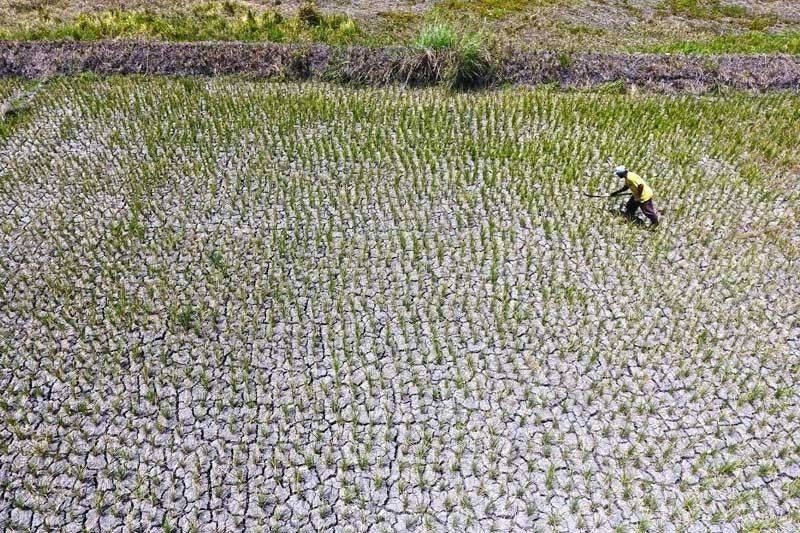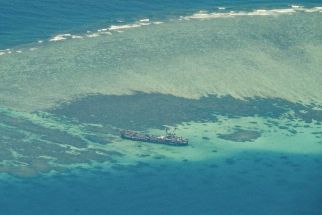4 Central Luzon provinces under dry spell

SAN FERNANDO, Pampanga, Philippines — Four provinces in Central Luzon are now under a dry spell amid the El Niño phenomenon, the Philippine Atmospheric, Geophysical and Astronomical Services Administration (PAGASA) said.
According to the state weather bureau, the latest assessment on the phenomenon showed that the provinces of Aurora, Bataan, Zambales and Nueva Ecija are among those under a dry spell.
Others similarly affected are Abra, Isabela, Metro Manila, Occidental Mindoro, Quirino, Rizal and Negros Occidental.
Under drought conditions are Apayao, Benguet, Cagayan, Cavite, Ifugao, Ilocos Norte, Ilocos Sur, Kalinga, La Union, Mountain Province, Nueva Vizcaya, Palawan and Pangasinan.
The provinces of Batangas, Laguna, Masbate, Oriental Mindoro, Antique, Biliran, Capiz, Cebu, Eastern Samar, Guimaras, Iloilo, Leyte, Negros Oriental, Samar, Lanao del Norte, Sulu and Tawi-Tawi are now experiencing dry condition, PAGASA’s assessment showed.
PAGASA explained that a dry spell is defined as three consecutive months of below-normal rainfall conditions (21 to 60 percent reduction from average rainfall).
A dry condition is defined as two consecutive months of below-normal rainfall conditions (21 to 60 percent reduction from average rainfall).
However, the number of affected provinces – 41, currently – is less than the 50 areas recorded based on PAGASA’s Jan. 21 assessment.
Despite the reduction, the government’s El Niño task force said it would reinforce preparedness efforts due to the strong and mature El Niño that is expected to continue this month, and is likely to persist until May.
State of calamity for Negros?
With 14 of its 25 barangays affected by El Niño, the municipal government of Cauayan in Negros Occidental is looking into the possibility of declaring a state of calamity.
Mayor John Rey Tabujara disclosed that 127 farmers and 126 hectares of rice and sugarcane fields in both upper and coastal barangays of Cauayan were affected.
All over Negros Occidental, the Office of the Provincial Agriculturists reported that damage to rice fields has gone up to P14.4 million, affecting seven local government units (LGUs), including Cauayan, as of Feb. 12.
A total of 369.11 hectares of rice fields and 383 farmers in 43 barangays of seven LGUs, including Cauayan, are now affected by the onslaught of El Niño.
Tabujara said he convened the Municipal Disaster Risk Reduction and Management Council and Municipal Agriculture Office on Thursday to check on guidelines, which will be used as basis in the declaration of a state of calamity.
Gov. Eugenio Jose Lacson has already directed the Office of the Provincial Agriculturists to identify farmers who will receive P2,500 in financial assistance, which they may use to recover in future crops.
Most of the affected areas are rice fields or farmlands that rely on rainfall instead of irrigation, the governor said.
What to expect from El Niño
The warm weather will start to be felt with the waning northeast monsoon or amihan in the country, said El Niño task force spokesperson Joey Villarama yesterday.
He added that the country is currently experiencing strong and mature El Niño which is expected to persist until June.
“Our temperature could reach 36.5 degrees Celsius without the humidity. Our normal body temperature is only 37.5 degrees and we should protect our body by being hydrated without being excessive,” Villarama added.
The task force spokesperson added that El Niño could also result in the infestation of crops.
“This (infestation) is part of the interventions of the Department of Agriculture, as the hot weather could trigger infestations of (rats), worms,” he added.
Farmers in Nueva Ecija and Pangasinan have reported that their onion farms were affected by armyworms.
Villarama said that all efforts are being done by the government to address the effects of El Niño.
He added that concerned government agencies need to reassess the current level of Angat Dam.
“The water level of Angat Dam remains high, but we need to reassess and reevaluate what should be done in the next days as our enemy here is nature. It is difficult on how we will respond as it is unpredictable,” he said.
Based on PAGASA monitoring, a heat index of 44 degrees Celsius was recorded in Legazpi City on Feb. 16, and 42 degrees Celsius in Cotabato City on Feb. 15.
The state weather bureau characterizes heat index between 42 and 51 degrees Celsius as dangerous, where heat cramps and exhaustion are likely. It said that heat stroke is probable with continued exposure. — Gilbert Bayoran, Bella Cariaso
- Latest
- Trending






























